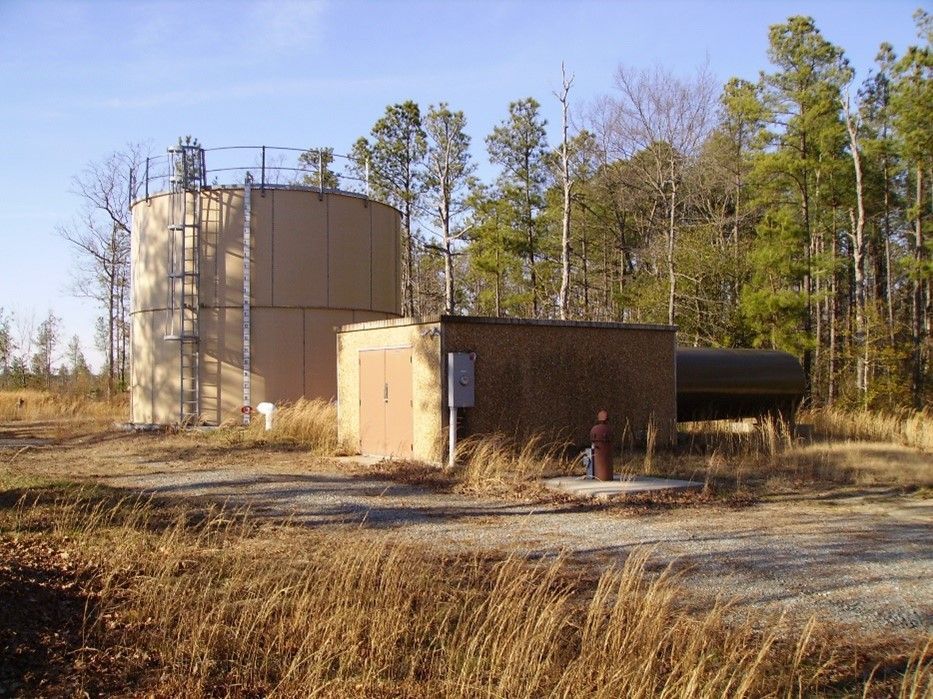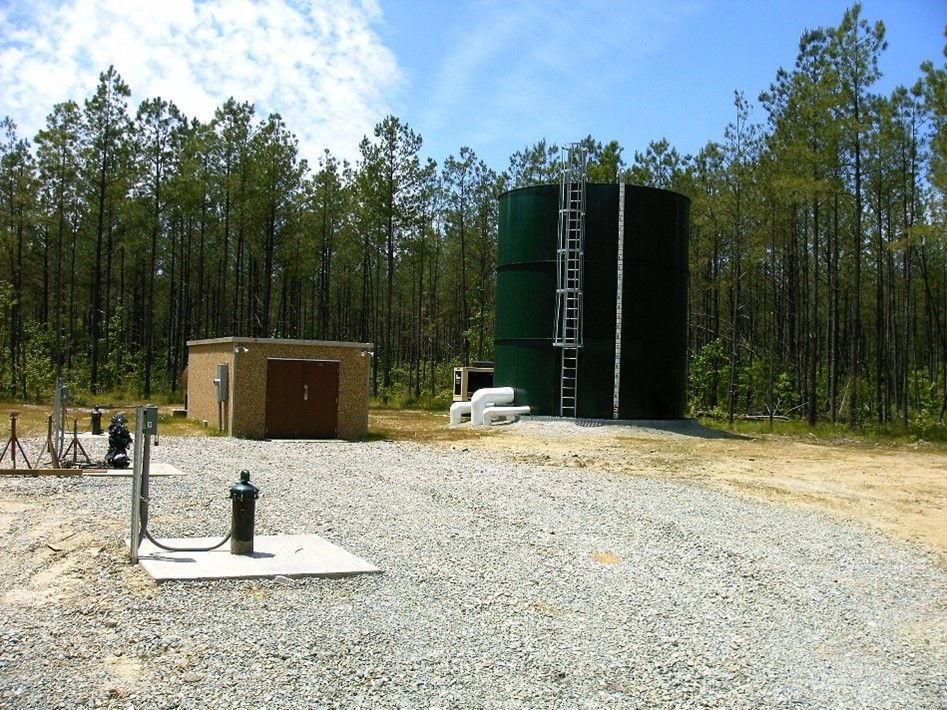Water Conservation Services in Richmond, Virginia
All of the water Sydnor provides to its customers for drinking and other domestic uses comes from wells. The groundwater pumped from these wells and delivered through water distribution systems to your homes is a precious resource that is often taken for granted. The amount of groundwater available for use by public water systems, commercial enterprises, and industries is very limited and constitutes only a small fraction of all the water on the planet. As a result, we need to be careful in how we use it and make every effort to conserve it so that there is an adequate amount of water available, both now and in the future.
In much of the coastal plain (Tidewater) portion of the State, groundwater usage is regulated by the Department of Environmental Quality (DEQ). Entities using more than 300,000 gallons per month or 10,000 gallons per day on average must apply for a Groundwater Withdrawal Permit, which limits the amount of water that can be pumped from the ground monthly and annually. The amount of water applied must be justified over a 15-year permit cycle. Additionally, the permit requires that the owner of the water supply prepare and submit a Water Conservation and Management Plan for review and approval.
Two of the four water systems that Sydnor Utilities owns and operates have water withdrawal permits issued by DEQ. They are the Scots Landing Subdivision water system in Hanover County and the Cedar Crest Subdivision water system in King William County. The water withdrawal limits for these two water systems are as follows:
| Water System Name | Maximum Monthly Withdrawal | Maximum Annual Withdrawal |
|---|---|---|
| Scots Landing | 2,331,000 gallons | 11,622,000 gallons |
| Cedar Crest | 843,200 gallons | 9,373,700 gallons |
Our two other water systems do not require a withdrawal permit. The Braxton’s Landing water system is too small, and the Tilman’s Farm system is located in the Piedmont, which is not part of DEQ’s groundwater management area.
As part of the Water Conservation and Management Plans we agreed to include information on our website which would be helpful to our customers. Included herein you will find three lists of tips to help you, our customers, conserve water. One list addresses ways to conserve water inside the home. The second list covers activities outside the house, such as lawn irrigation (watering) and car washing.
Please take note of these water-saving ideas and make water conservation a part of your day-to-day routine. We will be updating the lists occasionally to add new tips and replace others to keep them fresh and interesting.
Besides the water conservation tips, you can help us immensely by reporting any actual or suspected waterline leaks or breaks that you notice. Contact our office immediately so that we can investigate. Similarly, the storage tank should never be overflowing. If it does, it’s due to a failure of the well pump controls, which is not normal. If you observe this occurring, call our office and report it so that we can make repairs in a timely fashion and minimize the amount of lost water.
Water Saving Tips
Indoors
- Wash only full loads of laundry or match the water level to the size of the load;
- Take a shower rather than a bath;
- When using the dishwasher, try the water-saving mode. Most newer models have a “light wash” or “energy efficient” setting. Otherwise, run your dishwasher only when it’s full;
- Replace your shower heads with a low-flow variety and limit your shower to five minutes;
- Install low-volume toilets;
- Don’t run the faucet continuously while brushing your teeth;
- Repair leaky faucets as soon as possible;
- If the toilet flapper doesn’t seat properly after flushing, replace it;
- Use water-saving aerators on all your faucets;
- Bathe young children together and not separately;
- Turn off the water while you shave;
- Keep a pitcher of water in the refrigerator instead of running the faucet for cold drinks so that every drop goes down you and not the drain;
- Don’t use running water to thaw food. Defrost food in the fridge for water efficiency and food safety;
- When replacing major appliances such as washing machines, select water-saving models that can save you as much as 20 gallons per load.
Outdoors
- Adjust sprinklers so only your lawn is watered and not the sidewalk or driveway;
- Plant shrubs during the spring or fall when the watering requirements are lower;
- Minimize evaporation by watering your lawn during the early morning or late afternoon when temperatures are lower;
- Direct downspouts toward shrubs and trees or collect and use them for your garden;
- Install a rain shutoff device on your automatic sprinklers to eliminate unnecessary watering;
- Check your sprinkler system valves periodically for leaks and keep the sprinkler heads in good working order;
- Don’t water your lawn on windy days to minimize evaporation losses;
- Avoid installing ornamental water features and fountains that spray into the air. Trickling or cascading fountains lose less water to evaporation;
- Use a timer with automatic shutoff when watering your lawn to prevent over-watering;
- Landscaper with drought-tolerant trees, plants, and ground covers;
- Winterize outdoor spigots to prevent freezing/bursting during the winter months;
- Use a hose nozzle and turn off the water while washing your car;
- More plants die from over-watering than from over-watering. Only water when necessary;
- Most lawns require only an inch of water per week, including rainfall. If it rains during the week, reduce or stop watering as needed to prevent over-watering;
- Avoid recreational water toys that require a constant flow of water.
Other Actions You Should Take
- Check your meter box for leaks regularly. If there is standing water in the box, call Sydnor Utilities so we can investigate;
- Make sure you know where your master shutoff valve is located. This could save gallons of water loss and damage to your home if a pipe were to burst.
- Report suspected waterline leaks or breaks to Sydnor Utilities so that they can be investigated and repaired as needed.
- Coordinate with your neighbors and the HOA to minimize lost water and conserve this valuable resource.
- Check your water bill each month and look for high usage that could indicate a leak in the service line or house plumbing. Determine your normal monthly usage by dividing the total gallons used (as shown on your water bill) by the number of days in the billing cycle. The result gives the average daily usage for the month. Do this for a few months, and you should have a pretty good idea of what your normal usage is. Then, if you get a water bill that is considerably higher, which you can’t explain, it is very possible that you have a leaking faucet, running toilet, busted water meter, or a leak in the service line. Investigate immediately and have the necessary repairs made as soon as possible. If the problem is in the meter box, call Sydnor’s office to report the problem. Average daily usage should be roughly 100 - 200 gallons per day, depending on the size of the home and the number of residents. If you have a swimming pool or lawn irrigation system, you can expect higher usage during the summer months.
- Do one thing every day that will save water. Every drop counts!
Water Saving Devices
- Low flow shower heads reduce water usage by restricting flow to less than 2 gpm. This represents a reduction of 2-3 gallons per minute (gpm) and a considerable saving in usage. These devices are available at Lowe’s, Home Depot and most hardware stores. Models are available from Moen, Pulse, Pfister, Waterpik and others.
- Low Flush Toilets are designed to use no more than 1.6 gallons of water per flush. This represents at least a 50 % savings in the water used per flush. Over a year, this represents considerable savings in water and money. Models by American Standard, Delta, And Kohler are readily available at Home Depot and Lowe’s.
- Low flow faucets can also reduce water consumption. A typical low flow faucet will reduce water flow from approximately 2.2 gallons per minute to 1.5 gpm, a 30% savings. They are readily available at your local hardware store or the big box store of your choosing. Delta and Moen are two of the larger manufacturers.
- Irrigation System Controllers are important if you have an inground system for watering your lawn. Your irrigation system should be as efficient as possible so that the lawn isn’t watered unnecessarily. There are two types of irrigation controllers: weather-based controllers and soil moisture-based controllers. These smart technologies can override scheduled irrigation when there is sufficient moisture available, so lawns don’t need to be watered. Weather-based irrigation controllers tailor watering times based on local weather and landscape conditions. Soil moisture-based controllers make use of sensors that check the amount of moisture in the soil and prevent watering when moisture levels are sufficiently high.


